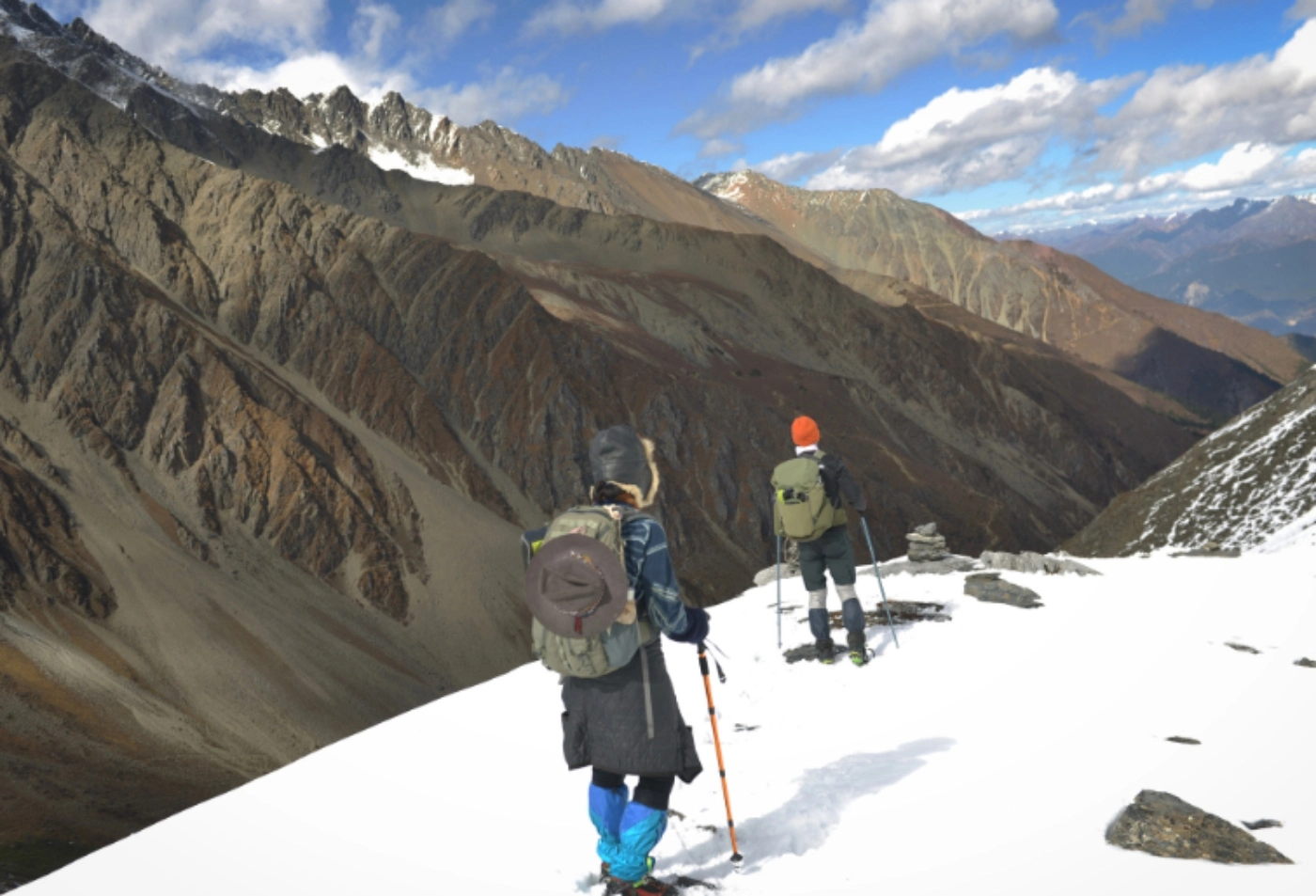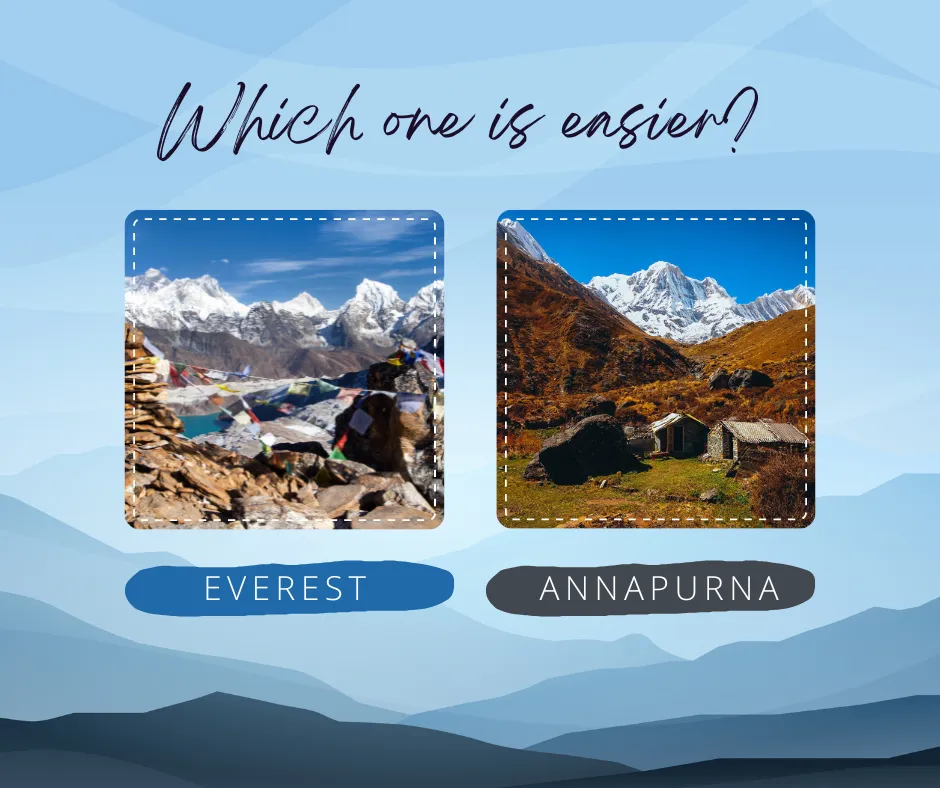Nepal vision | 25/09/2025
The Annapurna Circuit Trek is an adventure through the Himalayas that combines mountains, culture, and wildlife. Spanning 160–230 km, the trek moves from subtropical forests and terraced fields to high-altitude deserts and glacial valleys.
The trail passes through vibrant communities where Gurung, Thakali, and Manangi cultures thrive. Trekkers can taste local food, witness traditions, and feel the hospitality of these villages.
Along with that, the region also shelters rare wildlife, including snow leopards, Himalayan tahr, red pandas, and musk deer, which adds an extra layer of wonder to the journey.
But the best part is encountering stunning peaks like Annapurna I, II, III, IV, Dhaulagiri, Machapuchare (Fishtail), Gangapurna, Lamjung Himal, and Tilicho Peak. The best views of these calm and majestic peaks can be seen from the viewpoints of the Annapurna Circuit Trek, giving a fresh perspective. The bonus is that it makes sunrises and sunsets unforgettable.
So, let us get to know the best viewpoints of the Annapurna Circuit Trek to make your trekking experience a once-in-a-lifetime adventure.
Best Viewpoints on the Annapurna Circuit Trek
The Annapurna Circuit is famous for its diverse landscapes, towering peaks, cultural villages, and serene lakes. Along the trek, there are several viewpoints that give trekkers unforgettable experiences. Let us see the detailed guide to the top viewpoints and the usual trekking itinerary.
Poon Hill (3,210 m)
The first sightseeing point that most trekkers find in the Annapurna Circuit is Poon Hill. It is easily accessible to the majority of visitors because of the short walk. The dawn in Annapurna South, Dhauligiri, Hiunchuli and Machhapuchre is striking. With the crack of dawn, the mountains are a-glow and the morning is nearly magic. The scene makes one take time and think calmly about the journey that is yet to be undertaken. The exuberance of the morning and expansive surrounding provides the trekkers with the initial experience of the grandeur of the Himalayas.
Annapurna Base Camp (4,130 m)
The experience in Annapurna Base Camp is quite different. Trekkers are in a natural amphitheater of mountains, which include Annapurna I, Annapurna South and Hiunchuli. The road leading to the camp is difficult, yet every mile is paid off with spectacular views that are personal and grandiose. Arrival at the camp combines both physical and emotional gratification as a sense of accomplishment. The clean air, the sights of the glaciers, and the mountainous nature of the terrain make the trekkers close to the unrefined Himalayan environment. This is one of the must-stops on the list for nature lovers and adventurers.
Thorong La Pass (5,416 m)
The top of the circuit is Thorong La Pass, which stands at 5,416 m. It provides wide and clear views of the Dhaulagiri and Annapurna ranges. Reaching the pass is a challenging experience, and what will be gained is awe and exhilaration. Together as trekkers at the summit, there is a sense of humility, isolation, and spiritual oneness with the mountains. The expansive view and the thin air make it a moment of reflection and reverence, which supports the fact that it is regarded as the climax of the circuit.
Khopra Ridge (3,660 m)
Khopra Ridge is a serene descent, a contrast to Thorong La, on the other hand. It is less congested and it offers panoramic views of Dhauligiri, Nilgiri, Annapurna South, and Machhapuchhre. The loneliness inspires thoughtfulness and innovative discovery, be it in photography or contemplation. The mountains are personal and beckon the trekkers to stop and identify with the surroundings. The broad panoramic and calmness of Khopra Ridge are a welcome relief as opposed to the busy circuit outlooks.
Mardi Himal Viewpoint (4,500 m)
As one goes further, Mardi Himal Viewpoint provides a close encounter with Machhapuchhre. It is a dramatic contrast of its jagged mountains and deep valleys, and floating clouds. It is an average difficulty way to pass, yet the reward will be a personal close-up view of one of the most mystical mountain ranges in Nepal. The mountainous landscape and silent valleys make people think and admire the naked beauty. This scene is intimate and dramatic.
Upper Pisang Viewpoint (3,300 m)
Pisang Upper has a combination of nature and culture. Terraced fields, stone houses, and small villages meet here with the towering mountains. The perspective demonstrates the prosperity of local communities under challenging situations. The multi-layered perceptions make the trekkers enjoy the beauty of the Himalayas as well as the cultural tales that are interwoven in the landscape, making an enriching experience.
Ghandruk Viewpoint (2,000 m)
Ghandruk Viewpoint is beneath a Gurung village and has views of Annapurna South, Hiunchuli and Machhapuchhre. The location is an amalgamation of the past, architecture and sweeping mountain views. The stroll through the village and experience of local life also makes the trek more lively and more dimensional. Ghandruk is a wonderful place to visit in order to gain culture and be in touch with nature.

Khayer Lake (4,700 m)
Khayer Lake is elevated, and it is a different experience. Alpine meadows are reflected in the glacial lake that has Nilgiri and Annapurna South. It is regarded as being holy and creates silence, meditation, and photography. The serene waters set on the rocky mountains enhance the peace and spirituality. Going there is like entering the realm of sanctity, entailing the beauty and power of nature.
Muktinath Viewpoint (3,710 m)
Muktinath Viewpoint is a provider of spiritual and visual wealth. This is the viewpoint of trekkers who view the Dhaulagiri massif, Nilgiri and the expansive Kali Gandaki Valley. Sacred energy is created by the temples and rituals of the area. The sharp contrast of the arid hills, snowy mountains, and cultural heritage makes a deep sensorial experience of the eyes and the soul.
Gangapurna Lake (4,600 m)
A little-known secret of peaceful beauty is the Gangapurna Lake at Manang. Its glacial waters are reflective, with snow-capped peaks, which make the place serene and heavenly. The lake has become popular during acclimatization and promotes serious reflections and silent photography. The silence and haunting beauty give one an ideal chance of stopping and imbibe the majesty of the Himalayas, and memories of the feeling of natural and emotional uplift remain.
Why the Annapurna Circuit is Famous for Viewpoints?
The Annapurna Circuit is one of the world’s most famous treks because of its breathtaking mountain views. Along the trail, you can see towering peaks like Annapurna I, II, III, IV, Dhaulagiri, Machapuchhre (Fishtail), and Tilicho Peak. IN addition to that, the trail also passes through the Kali Gandaki Gorge, the world’s deepest valley. You can get the sense of awe and scale of the journey.
What makes the Circuit special is the variety of landscapes. You start in lush, green forests and terraced farmland, cross sparkling rivers, and climb high-altitude rocky terrain and icy glaciers. Every viewpoint offers something different: some show quiet valleys, others reveal majestic snow-covered peaks, and every stop feels like a new adventure.
The trek is also famous for its sunrises and sunsets. Poon Hill and Thorong La Pass are ideal for seeing the mountains light up in shades of orange and red. These quiet, peaceful moments are perfect for reflection and photography.
Best Time to Visit
- Spring (March–May): The rhododendrons bloom, rivers flow strongly, and the weather warms further, resulting in a colorful and lively atmosphere.
- Autumn (September–November): Skies are clear, temperatures are comfortable, and post-monsoon landscapes look crisp. Among the best times to explore the aura of nature and the appeal of the culture of Nepal as the time also coincides with local festivals, adding a cultural touch to your trek.
Tip: At high-altitude spots like Thorong La Pass, temperatures can drop quickly. Layered clothing is essential, and always be ready for sudden weather changes.
Photography Tips
- Timing: Sunrise and sunset provide the best natural light. Early mornings often have less haze.
- Gear: A wide-angle lens captures the vast mountains, while a telephoto lens is ideal for wildlife or distant details.
- Tripod: Useful for low-light shots, time-lapses, or long-exposure photography.
- Best Locations: Don’t miss Poon Hill, Thorong La Pass, traditional villages, waterfalls, and natural hot springs for diverse photo opportunities.
The Annapurna Circuit is a journey through breathtaking landscapes, vibrant cultures, and unforgettable mountain vistas. From the serene sunrises at Poon Hill to the awe-inspiring heights of Thorong La Pass, every viewpoint offers a unique experience that stays with you long after the trek ends.
Plan Your Trek with Nepal Vision Treks
Don’t just dream about the Annapurna Circuit, experience it. Let Nepal Vision Treks guide you safely and comfortably through this iconic journey.
FAQs









